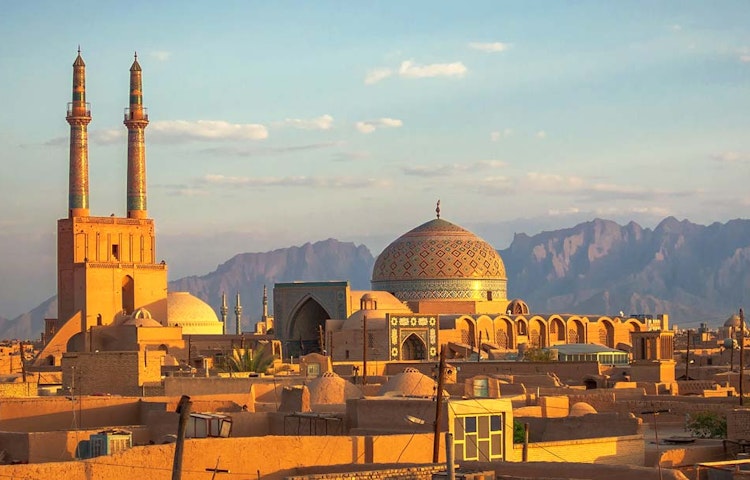Table of Contents
Introduction
With a long and rich history dating back thousands of years, Iran is home to some of the world’s most magnificent historic cities. A journey through the urban centers of Iran offers a fascinating glimpse into Persian culture past and present. From the bustling modern capital of Tehran to the dazzling mosques of Isfahan, Iran’s historic cities are filled with breathtaking architecture, lively bazaars, and remnants of ancient civilizations. In this article, we explore some of Iran’s top historic cities on an overland journey from Tehran to Isfahan.
Tehran
The journey begins in Tehran, Iran’s sprawling modern capital and largest city. Though much of Tehran is new, there are still historic sites to discover amongst the traffic and towering skyscrapers. The Golestan Palace stands out as a UNESCO World Heritage site, with the ornate tiled facades of its 17th century pavilions and halls. Nearby is the Grand Bazaar with its maze of corridors, shops and stalls selling everything from spices and carpets to gold and electronics. The Milad Tower offers panoramic views over Tehran from 435 meters up. The bustling streets below provide endless people watching and glimpses into everyday life.
Kashan
Traveling south from Tehran leads to the desert oasis city of Kashan. With a history dating to the Sassanid era, Kashan has long been known for its textiles, architecture and breathtaking gardens. The famous Fin Garden demonstrates classic Persian garden design with symmetrical pathways, fountains and pools. Nearby Boroujerdi House stands as one of the finest examples of a wealthy 19th century merchant’s home in Iran, with intricate carvings and stained glass windows. Kashan’s historic bazaar and prominent Agha Bozorg Mosque also showcase Persian architectural traditions.
Isfahan
Continuing the journey south brings you to Isfahan, renowned as the “Jewel of Iran” for its magnificent mosques, bridges, squares and bazaars. The stunning centerpiece is Imam Square, one of the world’s largest and most beautiful public spaces, surrounded on all sides by architectural wonders. The intricate blue tiled mosaic work on the Sheikh Lotfollah Mosque is a masterpiece not to be missed. The famed Khaju Bridge with its 23 stone arches spans the Zayandeh River, offering scenic views. Isfahan’s historic Armenian Quarter has one of the world’s largest Armenian cathedrals while the Grand Bazaar houses hundreds of stores beneath brick domes and arches.
Shiraz
Southwest of Isfahan lies Shiraz, a city celebrated for its literary history, stunning gardens and numerous historic sites. As the home of beloved Persian poets Hafez and Saadi, the spirit of Shiraz is captured in its poetry houses and tombs dedicated to these cultural icons. The pink tiled Nasir-ol-Molk Mosque remains one of the most photogenic sights in Iran. Nearby, the Arg of Karim Khan originally built in the late 18th century stands as an iconic mudbrick citadel. The sprawling grounds of Eram Garden showcase beautiful architecture alongside floral arrangements. Make sure to also visit Vakil Mosque and wander through the Vakil Bazaar to admire Persian handicrafts.
Yazd
The desert city of Yazd, located between Isfahan and Shiraz, offers a glimpse into old Persia with its qanats (underground aqueducts), windcatchers, and ancient fabric. Stroll through the historic district to see the iconic Amir Chakhmaq Complex and Masoudiyeh Square. Marvel at the Dowlat Abad Garden with Iran’s tallest windcatchers. Yazd makes clear the ingenuity behind Persian architecture in hot, arid environments. The Old City Fabric display of construction styles and materials provides fascinating insights into building practices from centuries ago.
Conclusion
This journey through some of Iran’s most magnificent historic cities provides only a taste of the vast cultural riches this ancient land has to offer. From the dynamic modern capital of Tehran to the dazzling mosques of Isfahan and the atmospheric winding lanes of Yazd, each stop on this route through the heart of Iran reveals new facets of its history, architecture and artistry. Visitors walk in the footsteps of poets and kings, while also experiencing the welcoming hospitality of modern day Iranians. With endless photogenic scenes, bustling bazaars, exquisite cuisine and layers of living history, Iran’s historic cities offer an unforgettable adventure into one of the world’s oldest civilizations.
FAQs
What are some of Iran’s top historic cities to visit?
Some of Iran’s top historic cities include Tehran, Kashan, Isfahan, Shiraz, and Yazd. These cities feature breathtaking architecture, lively bazaars, historic sites, and remnants of ancient Persian civilizations.
What are the main things to see and do in Isfahan?
Isfahan’s main attractions include Imam Square, Sheikh Lotfollah Mosque, Khaju Bridge, the Armenian Quarter, and the Grand Bazaar. Visitors can admire intricate architecture, shop in the bazaar, and photograph scenic bridges.
What is Shiraz known for?
Shiraz is known for its literary history as the home of poets like Hafez and Saadi. It also features stunning gardens like Eram Garden, historic sites like the Arg of Karim Khan, and iconic mosques like the pink-tiled Nasir-ol-Molk Mosque.
How is Yazd architecturally unique?
With its desert climate, Yazd features unique Persian architecture like windcatchers, underground qanat aqueducts, and ingenious building styles using mudbrick and other materials to create airy, cool spaces.
What is there to see and do in Tehran?
As Iran’s modern capital, Tehran offers attractions like Golestan Palace, Grand Bazaar for shopping, Milad Tower for city views, and lively street life. It provides a contrast to the country’s older historic cities.
